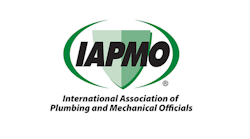Latest from Coronavirus News
ABC Members Exempt From Federal Vaccine Mandate
Sponsored
FRANKLIN PARK, IL – Sloan, a leading manufacturer of commercial plumbing systems, has developed a guide indicating best practices for commercial buildings in order reduce water safety risks as facilities around the country begin to re-open.
There are serious risks associated with prolonged system inactivity. Water that sits in plumbing lines for extended periods of time becomes stagnant, which could lead to elevated levels of lead and copper. This water also has the potential to contain little to no residual disinfectant, leading to elevated levels of bacteria and other microbiological contaminants.
“Facilities should keep water moving through their buildings to minimize problems associated with bacterial contamination,” said Dr. Andrew Whelton, Associate Professor of Civil Engineering and Environmental and Ecological Engineering at Purdue University. “Plumbing fixtures that can be programmed to automatically purge potable plumbing lines can greatly reduce the potential for complications and health risks associated with stagnant water.”
For flushometers, Sloan’s guidelines recommend starting the water-purging process with water closets and urinals located the farthest from the branch lines and flushing the first water closet and/or urinal at least three times. Each subsequent water closet and urinal only needs to be flushed twice. In the case of urinals with ultra-low flush volumes (0.125-0.25 gpf), five to six flushes are required. Pressure-assisted and tank-type toilets should also be flushed a minimum of three times, while allowing a full setup and re-pressurization in between each flush.
Automatic faucets are easily flushed simply by placing a hand underneath the faucet for a minimum of 30 seconds. Faucet sprayheads should be removed after the flushing process to remove debris and sanitized in a bleach solution, if not replaced altogether.
Employee safety throughout the flushing process is critical, as initial flushes of stagnant water have the potential to release chemical and microbiological contaminants. Guidance on worker safety for Legionella control and prevention can be found at osha.gov.
For more information on Sloan’s support throughout the COVID-19 pandemic, visit sloan.com.


